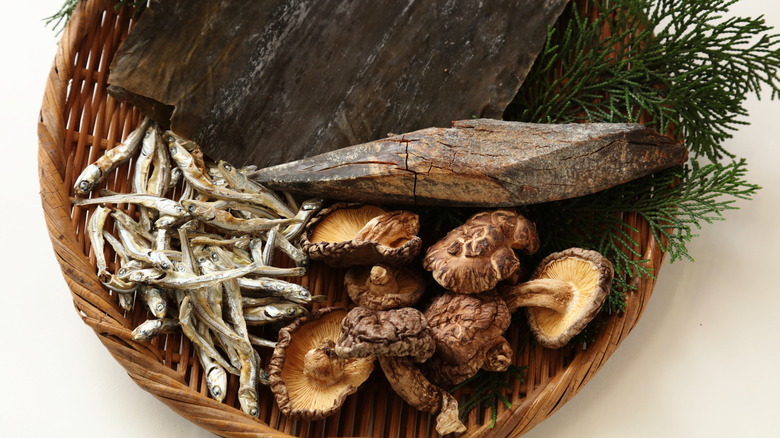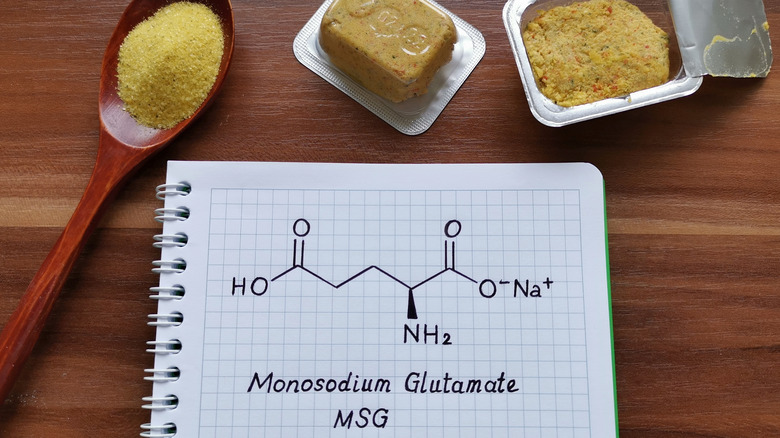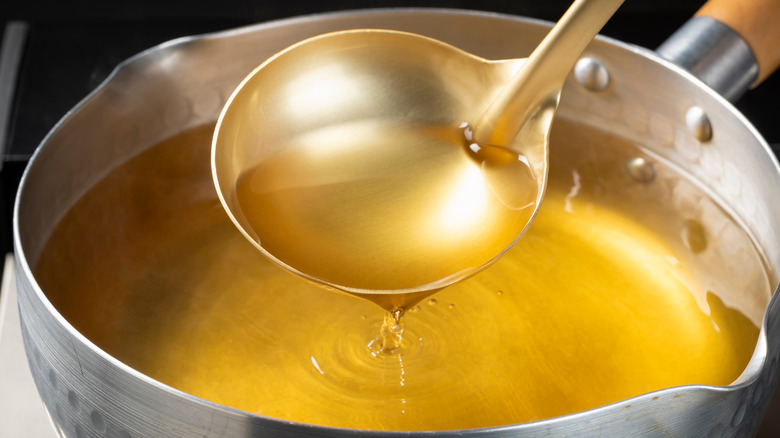What Everyone Gets Wrong About Umami
Umami encompasses a different and more complicated concept than mere flavor. But what is it, exactly? Epicurious describes umami as savory deliciousness, while Food52 mentions an earthy and meaty quality that adds depth to a dish. If it sounds a little ethereal that's because it can take on many forms. According to First We Feast, umami contributes to "flavor potential". Since the experience of umami is perceived by various senses, it is often harder to pin down. But know this: it's technically not a flavor.
The Umami Information Center explains that at the beginning of the 20th century, Japanese scientist Kikunae Ikeda outlined the umami concept after consuming dashi broth and realizing that the experience couldn't be described by flavor alone. Ikeda eventually found that the source of the sensation came from glutamate, an amino acid. Ultimately, it became clear that umami wasn't a flavor, exactly, but a sensation that encompasses texture and enhances other proper flavors.
What about MSG?
Given the amplified depth and perceived deliciousness of foods containing glutamate, umami has proven to be pretty intriguing. Smithsonian Magazine explains that Professor Ikeda eventually isolated the amino acids that made his dashi broth so intriguing and turned into a sodium salt known as monosodium glutamate, otherwise known as MSG.
Essentially pure glutamate, MSG can be used in foods to add extra depth. While MSG is rarely praised, the FDA indicates that it's generally considered safe. Smithsonian Magazine points out that glutamate and MSG target the same receptors, making them indistinguishable to your body. In the same article, professor of biology Amy Cheng Vollmer explains that the effects of MSG come down to context. She explains that when glutamate is contained in food, it is present alongside a multitude of other nutrients that help regulate it. On the other hand, MSG is absorbed directly into the bloodstream.
Where can you find umami in food?
Umami is also a texture, coating the entire mouth and creating a sensation of fullness that endures for a while, according to the Umami Information Center. The site also mentions that salivation is amplified when consuming foods with high umami. So, as you can see, umami is more closely associated with experienced sensations and less with a flavor profile, which is why the range of foods with umami characteristics is so diverse.
If you're ready to incorporate more umami into your life, Food52 recommends cooking with ingredients such as parmesan, anchovies, soy sauce, miso paste, mushrooms, and tomatoes. According to the International Glutamate Information Service, glutamate content also increases as foods mature, which explains why it's often identified in foods such as cured meat and mature cheese. Given the fact that umami is such a powerful culinary force and is found in so many delicious foods, it's worth experimenting with this unique element.


